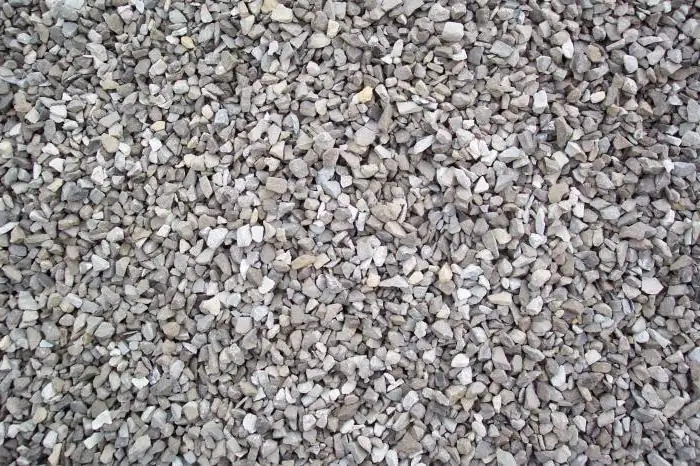2025 Author: Howard Calhoun | [email protected]. Last modified: 2025-01-24 13:10:30
Crushed stone, the types of which will be described in more detail below, is a building material obtained as a result of the initial grinding and subsequent sifting of rocks. It is part of the concrete mix for the foundation, and its characteristics largely determine the strength of the solution. Therefore, before starting construction, you should decide what kind of crushed stone will be used. This is especially true for foundations, which are subjected to heavy loads during the operation of the house. And it is on the strength of the foundation of a residential building or a building for another purpose that the durability of the entire structure will depend.
Crushed stone classification
This material is classified according to several main features. Among them, it is worth highlighting: a variety of rock, strength and frost resistance. In order of increasing strength, the following varieties of crushed stone should be distinguished: slag, secondary, as well as limestone and gravel, the last in the list is granite. The most durable and reliable is granite, it acts as the best option for pouring the foundation. But if we take into account two characteristics: efficiency and durability, then gravel is considered the bestvariety. Secondary crushed stone is obtained by crushing concrete waste, as well as breaking bricks. Before using this material, care must be taken to remove the old fittings.

Crushed stone, the types used in construction of which are described below, may have different strengths. Depending on this, the material is divided into grades. Quite weak crushed stone is the one that belongs to the M200 brand; it should not be used to form concrete structures that will be subjected to significant loads during operation. If we are talking about high-strength crushed stone, then it contains a small amount of grains from low-strength rocks, their volume does not exceed 5%.
Of great importance for construction in harsh climates is the number of freeze and thaw cycles that crushed stone will be able to undergo without losing its quality characteristics. Thus, in terms of frost resistance, the material can be classified in the range from F15 to F400. Most often, builders pay attention to these indicators, however, crushed stone can also be classified according to some auxiliary characteristics, for example, by the level of adhesion or radioactivity.
Main varieties: crushed granite
Crushed stone, the types of which are described in the article, may be granite. It is a non-metallic building material that is obtained from solid rock. Frozen magma looks like a monolithic rock, which is extracted from a considerable depth. In the manufacture of this material, state standards are used.8267-93. If you are interested in the types of crushed granite, then you should know that it is divided into fractions. Thus, the size of the grains in the material can be equal to a minimum of 0 to 5 mm, and a maximum of 150 to 300 mm.

The most common among consumers is crushed granite, the fraction of which varies from 5 to 20 mm. It is this material that is used in the manufacture of asph alt and concrete. Granite crushed stone is used when the mortar is closed for the formation of reinforced concrete structures, railway tracks, when laying the foundations of roads, as well as sidewalks and platforms.
Characteristics and scope of crushed gravel
This kind of crushed stone is made by passing quarry rock through a special sieve or crushing stone rock. GOST 8267-93 is used as a regulatory document for production. This type of crushed stone is inferior to granite in compressive strength. Among the advantages, insignificant radioactivity, as well as low cost, should be highlighted. Considering the types of gravel and crushed stone, it is necessary to highlight the varieties of gravel, among which it is worth noting crushed crushed stone and gravel.

The first is made by processing the rock, while the second is a pebble of river and sea origin. Gravel crushed stone is used as a filler in the formation of products, as well as reinforced concrete structures. It is applied in civil engineering, in the process of pavement of pedestrian roads, as well as inarrangement of bases and platforms.
Reviews on limestone rubble
Considering the types of crushed stone and its application, consumers distinguish the limestone variety, which is a material obtained by the technology of processing sedimentary rock. The raw material used is limestone, which is composed of calcium carbonate and has a low cost. The main varieties, as buyers emphasize, are materials, the fraction of which lies in the range from 20 to 40 mm and from 40 to 70 mm. The intermediate value is the limit from 5 to 20 mm.

According to users, crushed limestone is used in the glass and printing industries. It is also actively used in the manufacture of small-piece reinforced concrete products, in the process of building roads, on the surface of which there will not be a large traffic load during operation.
Secondary rubble: what he needs to know
This material is made using the technology of processing construction waste, namely: asph alt, concrete and brick. The material must comply with GOST 25137-82. In this case, the same technology is used as in the manufacture of other varieties of crushed stone. The main advantage is the low price. According to the characteristics of strength and frost resistance, this material is inferior to natural varieties of crushed stone. It is used in road construction, as an aggregate for concrete, as well as for strengthening weak soils.
What you need to know about crushed stone screening
Crushed stone, the types and characteristics of which are described in the article, is in demand in construction, as is the screening of this material. It is a by-product of production. Crushed stone has a fraction ranging from 5 to 70 mm and above. If rock grains have a fraction of up to 5 mm, then they are screenings.

Depending on the raw materials, three main types should be distinguished:
- granite;
- limestone;
- gravel.
In addition to the above varieties, recently produced secondary crumb, which is a waste of production, which uses crushed stone and unusable reinforced concrete products. This type of crushed stone is the cheapest and is used to form the top layer of streets in winter.
Characteristics of crushed stone screening varieties
The main types of crushed stone screenings were presented above, but if you want to purchase this material, you need to familiarize yourself with the main characteristics of the material in more detail. If we are talking about crushed granite grade M1200, then its bulk density is 1.32-1.34 t/m3. The modulus of fineness in millimeters is limited by an indicator from 0.1 to 5 mm. Foreign impurities contain no more than 0.4%.

Gravel screening of crushed stone, the grade of which varies from 800 to 1000, has a bulk density of 1.4 t/m3. The size of the components varies from 0.16 to 2.5 mm. Limestone screening of crushed stone can have a strength grade from 400 to 800. Bulk densityis 1.3 t/m3, while the grain size varies from 2 to 5 mm.
A little more about dropouts
Crushed stone, the types and characteristics of which are of interest to many builders, is presented for sale in the form of screenings. Crushing waste in some characteristics and scope of use is close to the described recyclables. However, it should be remembered that these materials are completely different, and their difference lies in the fact that sand screenings have a greater number of foreign inclusions. It may contain large stones up to 100 mm and very fine sand, which limits the area of use of such raw materials.
Scope of screening crushed stone
The use of crushing screenings is diverse. They are used in agriculture, construction, printing and in the beautification of household territories. Like gravel, granite screenings are used for finishing, when casting curbstones and tiles, as follows from consumer reviews. Without losing quality, they can replace gravel in concrete, reducing the cost of the material. Raw materials from limestone processing waste are used as a filler for cement-based mortars, which are used in wall cladding.

Conclusion
Crushed stone, the types of which must be known to the builder before purchasing the goods, may have a certain type of screening. Because it is a by-product, the cost is extremely low. For example, the price of gravel screenings is much less by 60% compared to the cost of crushed stone.
Recommended:
Loose material (sand, crushed stone): production and sale

Sand and crushed stone are used as bases for various buildings and landscaping, as well as aggregates for concrete
Types of crushed stone: description, characteristics, scope and origin
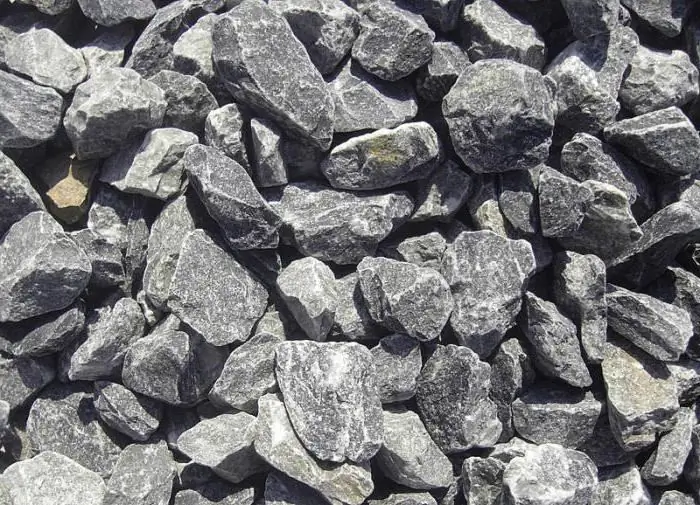
Crushed stone is a crushed stone and is divided into fractions according to its size. Technical characteristics such as flakiness, density, frost resistance, fraction, radioactivity affect the areas of use of crushed stone and its cost
Slag crushed stone: description, characteristics, use
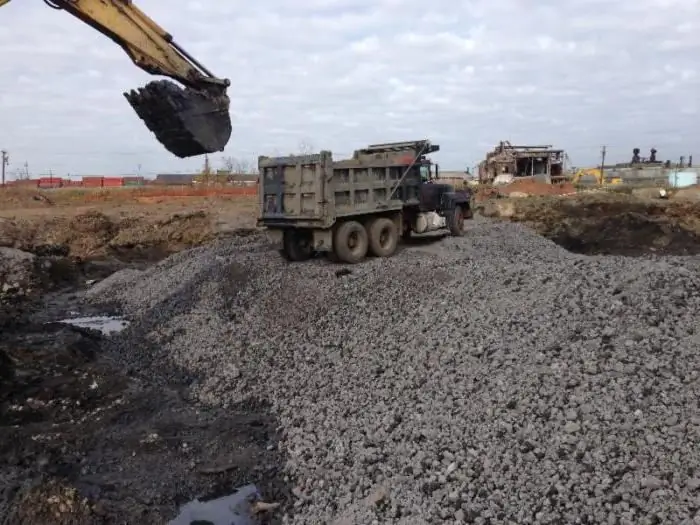
Crushed slag is a very cheap building material. According to the characteristics, it differs slightly from granite, both for better and for worse. Used in the construction industry
Crushed-stone-mastic asph alt concrete (ShMA): GOST, properties and characteristics
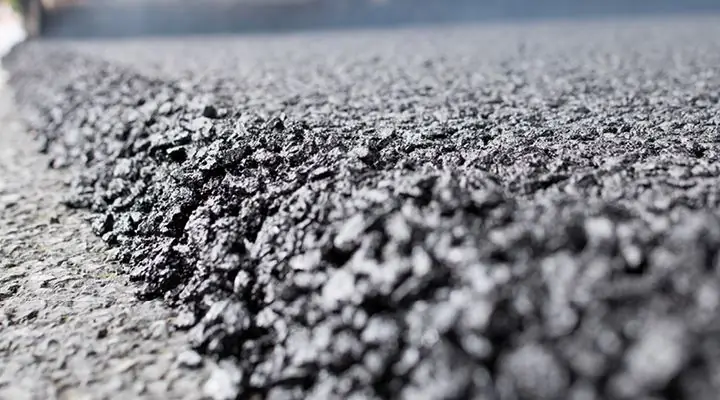
According to GOST, roads must be laid using asph alt concrete, which contains a stabilizing component. Its properties and appearance are of great importance for improving the quality of the final material, its transportation, preparation and installation. Additives are structuring fibrous. They allow you to maintain uniformity and help keep hot bitumen on the surface of crushed stone
Density of crushed stone - gravel, granite, limestone and slag. Bulk density of crushed stone: coefficient, GOST and definition
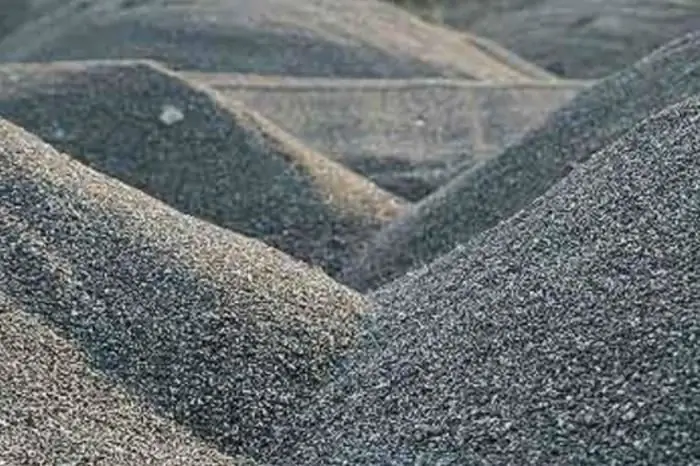
Crushed stone is a free-flowing, inorganic and granular material obtained by artificial crushing. It is divided into primary and secondary. This is an important fact. Primary - the result of processing natural stone: pebbles, boulders, pumice and other materials. Secondary is obtained by crushing construction waste, such as concrete, asph alt, brick. In this text, we will consider in more detail such a property as the density of crushed stone

